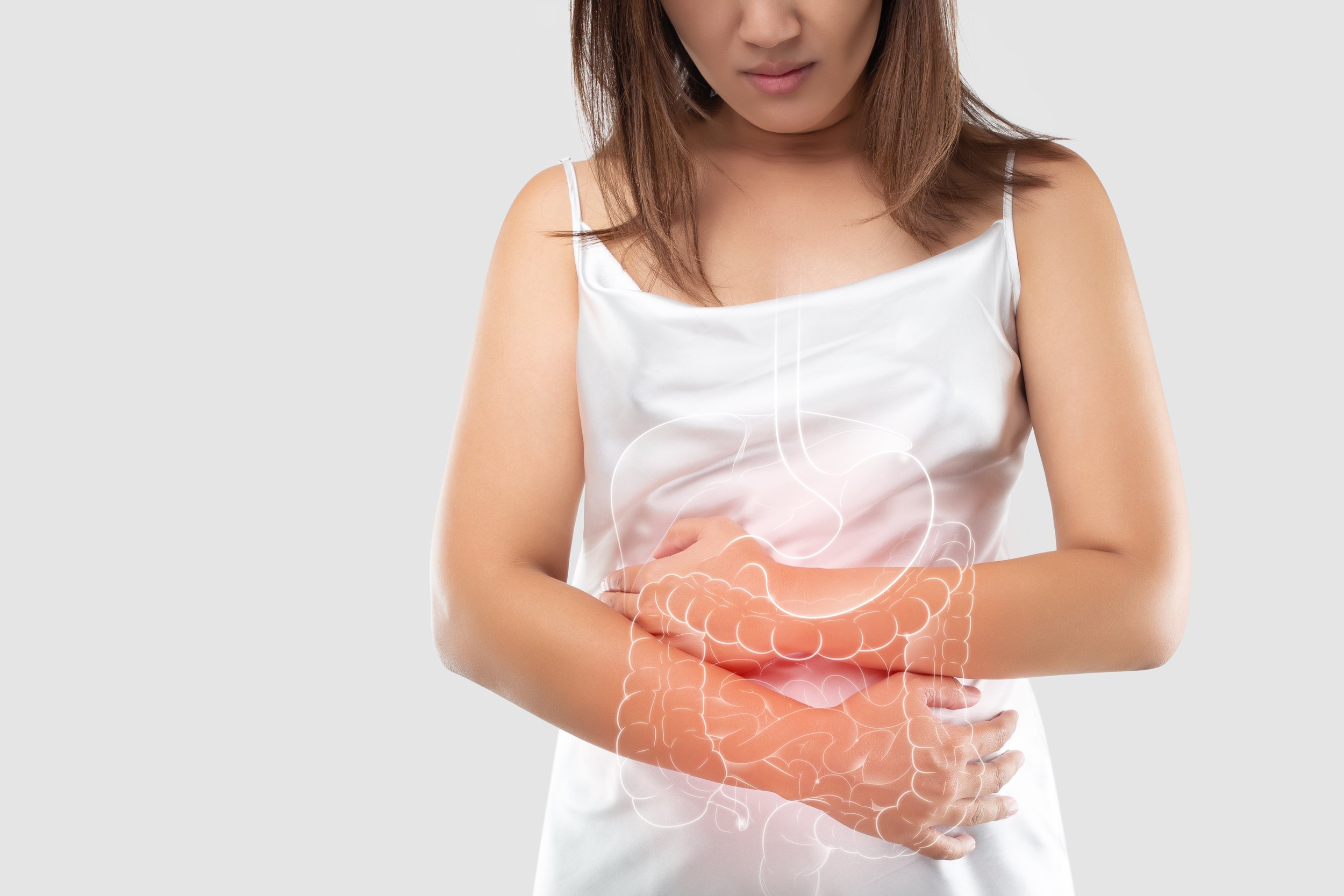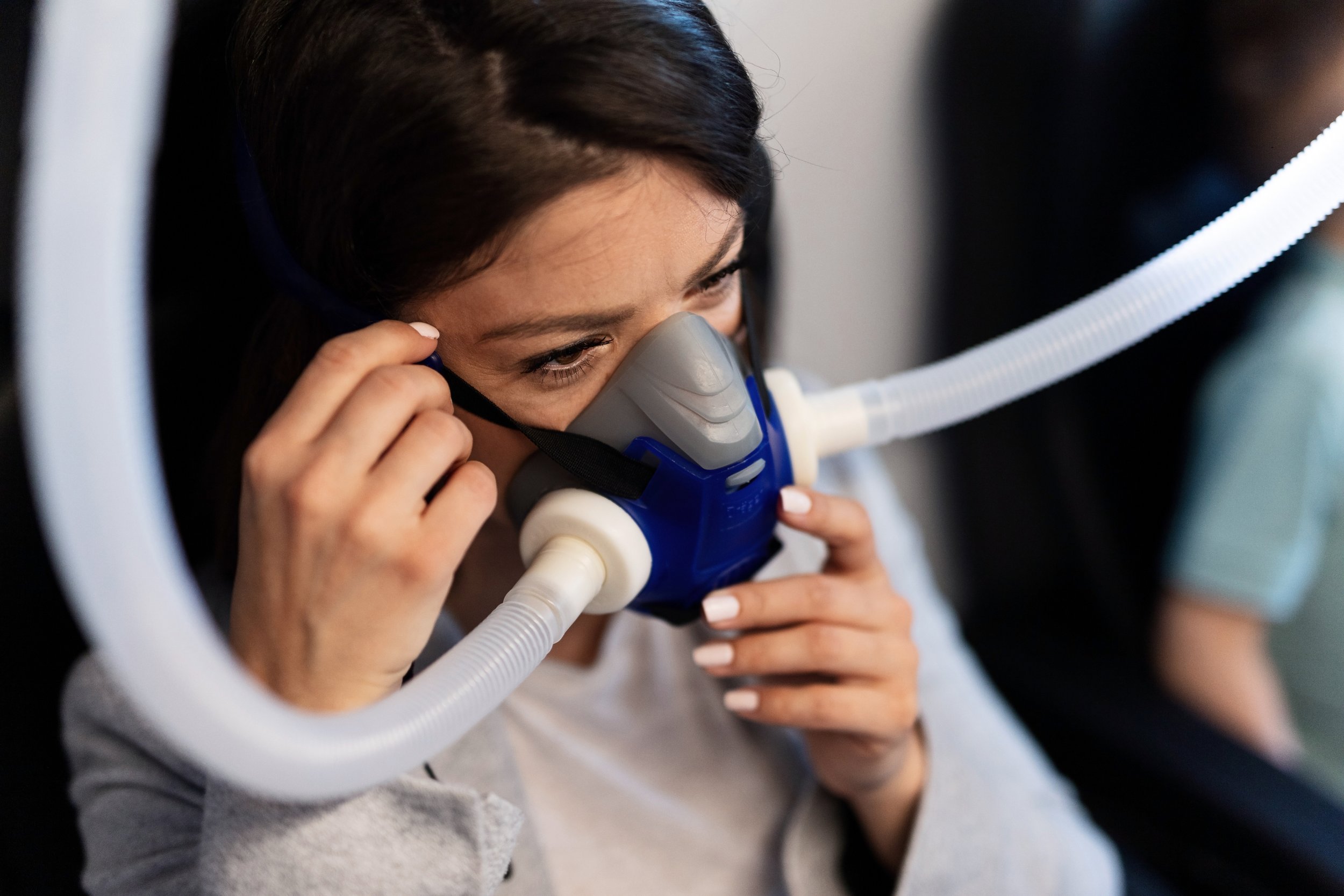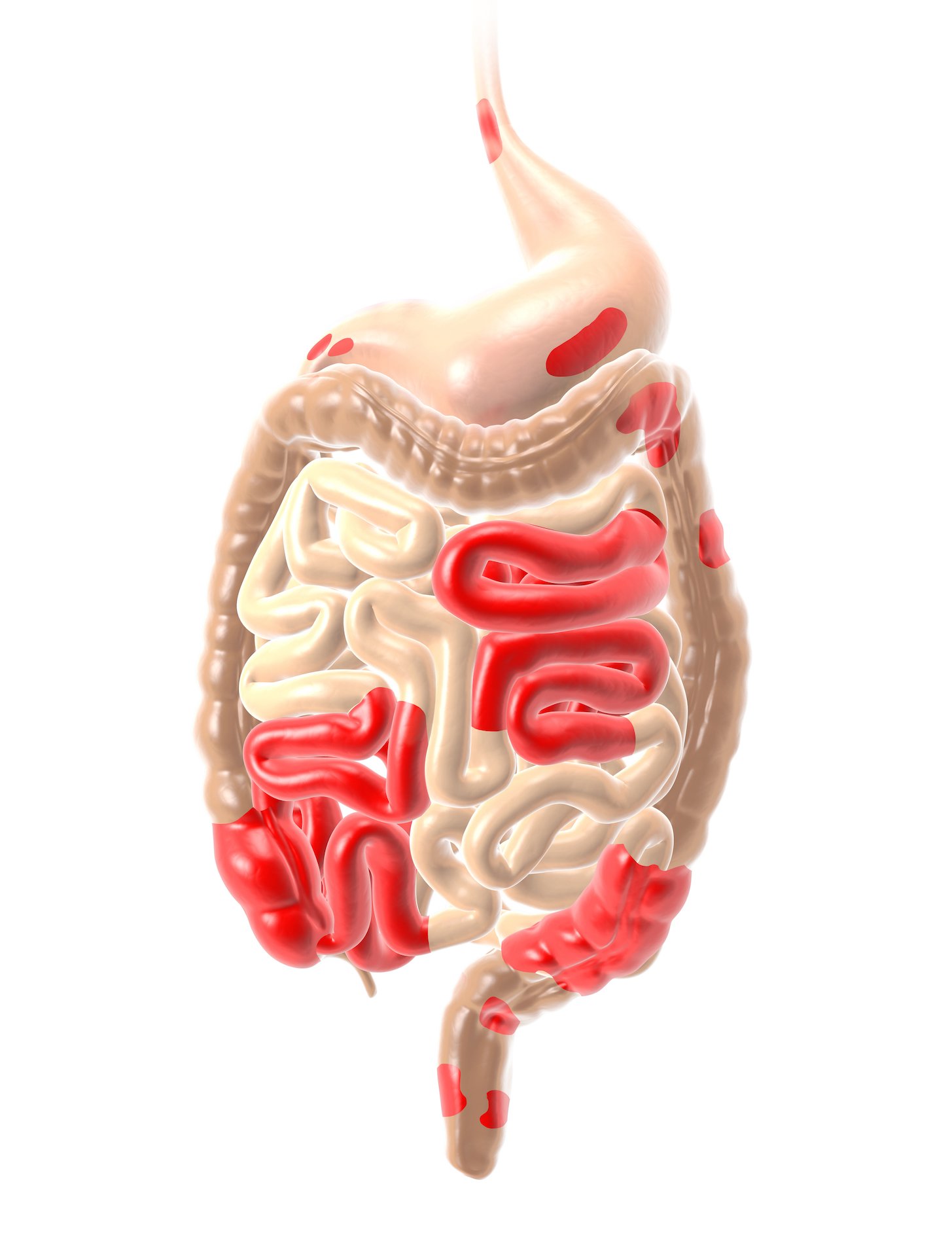
Crohn’s Disease
Stem Cell Therapy for Crohn’s Disease
Stem Cell Therapy for Digestive Diseases
About Crohn’s Disease
-
Crohn’s Disease (CD) is the category of IBD (Inflammatory Bowel Disease) that causes digestive tract inflammation, abdominal pain, diarrhea, weight loss, malnutrition, fatigue, and inflammation. All of these problems may occur due to Crohn’s Disease, which may involve several areas of the digestive tract in different patients. In severe or advanced cases, inflammation tends to spread to the deeper layers of the organs and bowel.
CD can be debilitating (causing weakness) and painful, which can lead to life-threatening complications and risks. In terms of interventions, Crohn’s Disease isn’t curable. However, therapies and medications can help reduce the signs and symptoms of the disease instead of focusing on the root cause of the problem. CD can be a chronic or long-term condition that may cause remission of the disease and remitting inflammation.
-
The most common causes of CD are:
Immunity: a few species of bacteria and viruses can trigger Crohn’s disease, causing abnormal immune responses in the digestive tract.
Genetics: Crohn’s disease is more common among people who have a family history of the disease. Genes may play a vital role in making people more susceptible to the disease.
Age and gender: people in their youth (before 30 years) have more chances of developing the disease. However, the black population of the United Kingdom and North America are at the highest risk of the disease.
-
The most prevalent symptoms of this disease are:
Cramping and abdominal pain
Fatigue, fever, and diarrhea
Bloody stools and mouth sores
Weight loss and loss of appetite
Drainage or pain around the area of the anus due to inflammation in the tunnel-like space deep inside the fistula (skin)
In Crohn’s Disease, part of the large or small intestine can be involved at different levels. In most patients, the disease ranges to the large intestine and colon, causing mild-severe intensity symptoms of the disease. Crohn’s Disease symptoms tend to develop slowly, but in some cases, they can appear spontaneously.
The Treatment Journey
-
Treatment for CD consists of medications as:
Anti-inflammatory disease
Corticosteroids
Oral 5-aminosalicylates
Immune system suppressor drugs
Vedolizumab
Natalizumab
Azathioprine
Mercaptopurine
Methotrexate
Infliximab
Ustekinumab
Adalimumab
Certolizumab
Antibiotics, vitamins, supplements, pain relievers, and antidiarrheal drugs
Surgery and nutritional therapy are the other options of treatments for Crohn’s Disease.
-
According to recent studies, Stem Cell Therapy (SCT) with bone marrow-derived MSCs (Cesenchymal Stem Cells) can significantly lower CD’s activity for improving the life quality and prognosis of chronic patients. Most of the time, Crohn’s Disease causes fistulas (abnormal connection of body parts causing pain and irritation).
Clinical data suggests that 75% of patients with fistulas had complete closure of the fistulas after the therapy with Stem Cell Therapy. Furthermore, data also suggests that this therapy can sustain its effects and can last as long as more than four years after one session.
Research studies conclude that Stem Cell Therapy is the new and promising treatment for Inflammatory bowel disease and Crohn’s Disease. Mesenchymal Stem Cells are the source of the most innovative and reliable cells for regeneration and repair in patients with chronic digestive tract damage and inflammation. Along with decreasing the disease-related problems, this therapy also has been evidenced in lowering the chances of flare-ups and recurrences. MSCs have potent immunomodulatory effects, preventing the immune system from abnormally responding to inappropriate threats in the body. Along with reducing negative immune responses in patients, Stem Cell Therapy also helps in providing a safe treatment for the disease with minor side effects.
Other than Mesenchymal Stem Cells, Hematopoietic Stem Cells (HSCs) also show relief from CD and restoration of immune tolerance in the patients.
In CD (Crohn’s Disease), Stem Cells can help with:
Inhibiting the intestinal inflammation
Promoting long-term healing of intestinal mucosa
Significantly improving the life quality of a patient
Improving Crohn’s disease-related perianal fistulation and IBD (inflammatory bowel disease)
-
According to the clinical literature, Exosomes combined with MSCs help in autoimmune diseases by regulating the inflammatory cytokines, microenvironment, and immune cells. These processes have a potent relation with both adaptive and innate immune cells. In these cells, macrophages, Treg cells, Th17, immunoregulatory miRNAs, and CD4+Th1 are the most crucial ones.
Exosomes-combined-MSCs help in the regulation of T-Cell subsets in cases of autoimmune diseases. Moreover, the MSCs-Exosomes also aid in reducing the levels and concentration of pro-inflammatory Th17 and TH1 cytokines as IL-17AF, IL-12p70, and IL-6. However, the same MSCs-Exosomes help in increasing the concentration of anti-inflammatory Treg.
Therefore, MSCs-Exosomes increase the concentration of Treg cells and the related products without changing the concentration index of the lymphocytes to maintain immunoregulation in the body. Similar effects of these cells are seen in the cases of RA (rheumatoid arthritis) and GVHD (graft-versus-host disease). MSCs-Exosomes help improve the GVHD by suppressing the differentiation of populations of the naïve T-cells. Macrophages constitute a crucial and major portion of the innate immunity of the human body, which can be regulated through the administration of MSCs-Exosomes. According to the different microenvironments, Mo (naïve macrophages) can be polarized into anti-inflammatory (M2) or pro-inflammatory (M1) to play different roles in different conditions. Along with the autoimmune conditions, this combination therapy can also help facilitate metabolic hemostasis to attenuate obesity and adipose inflammation. Moreover, MSCs-Exosomes can also promote the M1-M2 macrophage conversion to reduce the pro-inflammatory factors or effects of the macrophage M1.
How is the treatment at The Renue Medical Centre different?
The Stem Cell Therapy (SCT) at The Renue Centre is a holistic approach to treating Crohn’s Disease.
Your Renue Journey does not end after your last day of SCT. We follow up with you to assert your progress, following four phases:
Pre-treatment: Physical exam, clinical evaluation, lab test results, and other diagnostic procedures.
You will take our Renue Epigenetic Test powered by TruDiagnostics that will assert your biological age and other important health markers. Your TruDiagnostics test is part of The Renue Difference. It provides your doctor with critical information about your health and your true age (biological vs. chronological).
After the epigenetic test and we have received all your medical records, your Patient Advisor will assist you in planning your travel to Puerto Vallarta.Treatment day: On treatment day, with the help of apheresis and processing of Stem Cells, the donor cells are injected inside the body. Stem Cells transplantation can range from 1 x 106 – 8 x 106 cells. In the case of Crohn’s Disease, the recommended concentration of SC to be injected inside the body is 3 x 107 cells/ml. The route of administration of Stem Cells for Crohn’s can be intra-arterial, intranasal, and intravenous. The dosage also depends upon the severity and type of the disease, which is customizable. The injection of stem cells can be given at intervals of three months after the first dose.
30, 60 & 90 days follow-up: To check for flare-up frequency, improvements, pain, and irritation
Six months after treatment: Lab tests, flare-up frequency, clinical evaluation, quality of life, and disease prognosis
Your Treatment Journey
Experience The Renue Difference in Puerto Vallarta
Arrival Day
Upon arrival in Puerto Vallarta, a Renue representative will meet you at the airport in one of our special vans to transport you to the hotel.
Our representative will quickly review your schedule for the coming days for your peace of mind. Renue makes it worry-free, so don't worry!
Evening
You traveled all this way, so would you like to check our list of recommended restaurants? We can make reservations for you to enjoy the great food and warm atmosphere of Puerto Vallarta.
Check out the Renue chauffeur for recommendations, reservations, leisure activities, and your transportation needs.
Day 1. Enjoy The Renue Difference.
A better life starts now!
-
Count on your Renue Advisor and staff to help you have a pleasant experience. Our Renue chauffeur will pick you up from the hotel and take you to The Renue Medical Centre in the Joya Hospital. Our staff will welcome and assist you at the Centre.
Our staff will check you in at the Centre and take you on a tour to the facilities, including The Renue Laboratory, where your Stem Cells and Exosomes are produced. You will also visit the Hyperbaric Chamber facility, an essential part of The Renue Difference.
After your check-in, our medical associates will proceed with any necessary blood work or tests organized by your Patient Advisor.
After that, you will meet with your doctor to review your file. Then, your doctor will make any adjustments to your treatment schedule submitted by your Renue Patient Advisor.
Once your doctor has reviewed your file, additional testing might be required—for example, X-Rays, MRIs, and others.
After that, you will have your first Hyperbaric Oxygen Therapy (HBOT) session.
Following your first treatment session, our Renue chauffeur will return you to your hotel.
Evening
Do you have any plans for the evening? Or maybe you would need a Renue chauffeur?
Remember that relaxation can improve your health, too. Ask him for suggestions. They know the places to go in Puerto Vallarta.
Day 2. Now you're a pro!
Treatment Day & Second Hyperbaric Session
-
Our Renue chauffeur will pick you up according to the schedule and take you to The Renue Centre.
The medical team will welcome you and start your treatment for Crohn's Disease as soon as you arrive:
300 Million Stem Cells IV*
20 Million Stem Cells Internasal*
16 Billion Exosomes*
*The actual quantity of Stem Cells depends on the patient’s body weight and severity of the disease.
SCT is a successful treatment for the regeneration of cells, but combining Exosomes can even enhance its efficiency. Exosomes can be 3x more concentrated with growth factors to proliferate cell production compared to adult stem cells. Read more here.
Then, after your treatment and second Hyperbaric Chamber session, your Renue chauffeur will return you to the hotel.
Evening
Puerto Vallarta is a beautiful place; we suggest you don't miss out and enjoy your stay. You know it: ask our Renue chauffeur for suggestions and have fun!
Day 3. You're almost done.
The third Hyperbaric Session makes a difference.
-
Our Renue chauffeur will pick you up according to the schedule and take you to The Renue Centre.
Your scheduled treatment will start as soon as you arrive.
Then, after your treatment and second Hyperbaric Chamber session, your Renue chauffeur will return you to the hotel.
Evening
Your Renue Journey allows you to explore all that Puerto Vallarta has to offer.
Ask our Renue chauffeur for suggestions and remember to enjoy yourself.
Day 4. Departure or extended stay?
It's not over yet.
-
Our Renue chauffeur will pick you up from the hotel. Then, he will take you to the airport or another treatment according to your schedule.
However, maybe you would like to extend your stay and your wellness holiday because Puerto Vallarta is stunning!
Talk to our Renue chauffeur. Our team will contact you to confirm all details: tours, restaurants, hotel stay, and other treatments you would like to have.
Are you going to miss us?
Don't forget our follow-up treatments. Talk to your Patient Advisor:
Post-treatment:
30, 60 & 90 days follow-up: To check for flare-up frequency, improvements, pain, and irritation.
Six months after treatment: Lab tests, flare-up frequency, clinical evaluation, quality of life, and disease prognosis.
Significance of Hyperbaric Chambers post-treatment:
Three sessions of Hyperbaric Chambers are given to the patients after the treatment to:
Completely heal the fistulas, which are defined as an absence of active draining and closure of the external orifices
Completely heal the wounds and granulation of the skin
Complete epithelialization of the wounded or damaged skin
Less need for invasive and surgical procedures for wounds restoration
Mobilize the stem cells recently administered inside the body
Reduce the events of inflammation, Inflammatory lesions, and swelling associated with Crohn’s disease exacerbation
Alleviation of the painful symptoms and improvement of life quality in patients
Lessen the need for drug therapy in combination with the stem cell therapy
Expected Results
SCT to live a better life: Benefits and outcomes
The effectiveness of Stem Cell Treatment can improve all your symptoms, causing a considerable impact on your quality of life and daily activities.
As part of The Renue Difference, you will receive three Hyperbaric Chamber sessions that greatly improve SCT efficacy and stimulate the body cells to combat Crohn’s Disease (CD). These sessions comprise three days: one day before treatment, after treatment, and on the day of treatment.
According to results, clinical outcomes, and pre- and post-treatment observations, SCT has been shown to help:
Reduce CD progression
Speed up tissue repair
Regrow and repair tissues after six months
After the SCT procedure, an MRI test depicts the further need for the treatment at a specific body site.
Talk to our Patient Advisor to learnmore about SCT at The Renue Centre.
Expected results and prognosis:
Expected result 1: Immediate control of associated symptoms of the fever and lethargy post-treatment, but require monitoring of risk factors for stroke.
Expected result 2: More independence in ADLs and IADLS, pain reduction, and reduction in inflammation after six months of injection.
Expected result 3: Increased independence, drainage management, weight management, improved balance, and more life satisfaction.
FAQ’s
-
Stem Cell Therapy is the most dependable procedure for Crohn’s Disease now. Generally, Stem Cell Therapy has a satisfactory safety profile, good prognosis, and effectiveness.
However, no medical procedure is 100% safe; so, the most frequent or common risk factors of SCT can be:
Allergic reactions
Bleeding from the site of injection
Fever
Painful injection area /site
Lethargy and fatigue
-
Pre-treatment education can help with awareness of slight side effects of the therapy. Allergic reactions are preventable through pre-injection history and care. Bleeding and swelling of the injured site are manageable via proper technique. Fever, lethargy, and pain are managed through the appropriate drugs along with the treatment.
Crohn’s Disease is a chronic or long-term disease that occurs due to inflammation of the alimentary canal, digestive system, or GI tract. CD is the disease that causes ulcers, IBD (Inflammatory bowel disease), fistulas, and other abnormal systems of the skin and vascular system. Stem cell therapy has a great potential to be more effective than previous methods and also carries less risk. At the present time, Stem Cells Therapy or technology is in the beginning stages. However, the new ethical policies and rapid advancements can help in enhancing the applicability and prognosis of the treatment.
To assess your expected results, we would like to know more about you.
A medical advisor will talk to you about your diagnosis and treatment options and collect information for the attending physician; they can answer all your initial questions:
Will the therapy work for my case?
What does the treatment involve? Is it painful?
Is it expensive? How much does it cost?
Start your Wellness Journey!
Click on the button below to book a consultation to answer your questions and discuss your medical history, your treatment journey, and your goals.






